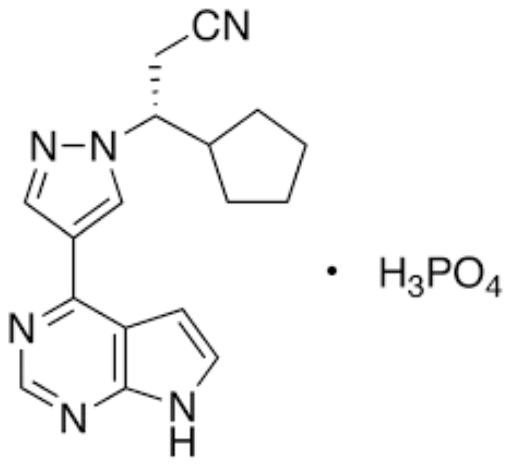Ruxolitinib phosphate, a name that may sound complex, holds within its chemical structure a powerful story of medical innovation and hope for patients battling a range of debilitating conditions. This small molecule, known as an Active Pharmaceutical Ingredient (API), is the key component of several life-changing medications, and its journey from lab bench to patient treatment is a fascinating one.
The Power of a JAK Inhibitor:
Ruxolitinib phosphate belongs to a class of drugs called Janus kinase (JAK) inhibitors. JAKs are enzymes involved in various cellular signaling pathways, including those governing immune function and blood cell production. In certain diseases, these pathways become overactive, leading to inflammation and other harmful effects. Ruxolitinib phosphate acts as a targeted inhibitor, blocking the overactive JAKs and restoring balance to these pathways.
From Concept to API: A Precision Dance of Chemistry:
The synthesis of ruxolitinib phosphate is a delicate dance of chemical reactions, demanding meticulous control over temperature, pressure, and reagents. Starting from simple molecules, skilled chemists orchestrate a series of transformations, each step carefully monitored and optimized to ensure the purity and potency of the final product. Stringent quality control measures are in place throughout this process, ensuring the API meets the highest standards for safety and efficacy.
Transforming API into Medicine: From Lab to Clinic:
Once synthesized and purified, the ruxolitinib phosphate API becomes the heart of various medications. Formulators combine it with excipients like buffers and stabilizers, creating injectable solutions or topical creams tailored for specific conditions. Through rigorous clinical trials, the safety and effectiveness of these medications are meticulously evaluated before reaching patients.
A Spectrum of Hope for Patients:
The impact of ruxolitinib phosphate extends far beyond the chemical realm. It has brought relief and hope to patients suffering from a variety of conditions, including:
- Myelofibrosis:A rare bone marrow cancer characterized by excessive scar tissue formation. Ruxolitinib phosphate helps reduce symptoms like fatigue, bone pain, and enlarged spleen.
- Polycythemia vera:Another bone marrow disorder causing an overproduction of red blood cells. The drug can control the symptoms and reduce the risk of blood clots.
- Atopic dermatitis:A chronic inflammatory skin condition. Topical ruxolitinib phosphate helps alleviate itching and improve skin appearance.
- Vitiligo:An autoimmune disease causing skin pigment loss. The topical form of the drug can help repigment affected areas.
Looking Forward: A Promise for the Future:
The story of ruxolitinib phosphate is far from over. Research continues to explore its potential in other inflammatory and autoimmune conditions, offering hope for even more patients. Advancements in manufacturing technology are also being pursued, aiming to improve accessibility and affordability of this life-changing therapy.
In conclusion, ruxolitinib phosphate API is a testament to the power of scientific innovation and its ability to translate into tangible improvements in patient lives. It is a story of dedication, precision, and unwavering commitment to bringing hope and healing to those who need it most.

